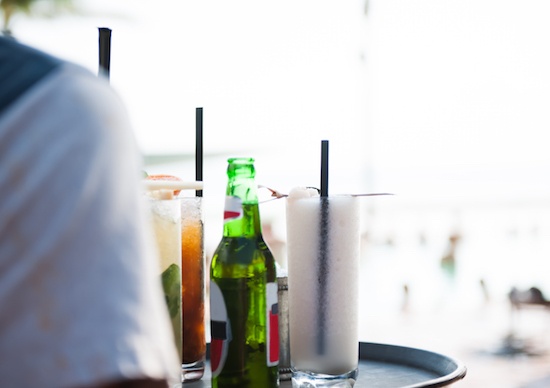The past 25 years have brought about a cocktail revolution as bartenders reclaimed their profession, historians resurrected recipes and back stories, and the consumer rediscovered their thirst for well-made, balanced adult beverages.
Robert Simonson, a writer for The New York Times and author of A Proper Drink, provided a pictorial crash course through modern cocktail history in a seminar at Tales of the Cocktail last month in New Orleans. Simonson highlighted 50 important events and personalities of the cocktail revival; here are 10.
1987: The Rainbow Room opens in New York with Dale DeGroff running the bar. Inspired by New York restaurateur Joe Baum, DeGroff (pictured atop) emphasized the art of the cocktail, with simple, classic recipes and fresh ingredients. His work there set the stage for the coming craft movement.
1991: Julio Bermejo creates the Tommy’s Margarita. Bermejo, the son of the owner of Tommy’s Mexican Restaurant in San Francisco, started re-engineering the house margarita. Simonson said he omitted the curacao and just used 100% agave tequila, lime juice and agave nectar to create a balanced and refreshing classic. Tommy’s became the epicenter for the tequila revival thanks to the eponymous margarita.
1994: Angel’s Share opens in New York. The Tokyo-style bar (you have to enter through a sushi bar) emphasized ritual and craft, Simonson said. Small and intimate, with craft ice and rules of decorum, Angle’s Share would inspire Sasha Petraske to open the legendary and influential New York cocktail bar Milk & Honey in late 1999.
1995: Artist Ron Cooper founds Del Maguey mezcal. It was the first higher-end mezcal brand in the U.S. and started the trend of using mezcal in cocktails. The mezcal category has expanded significantly in recent years; spirits giant Pernod Ricard acquired Del Maguey in June.
1998: Absinthe Brasserie and Bar opens in San Francisco. Absinthe was the first modern cocktail bar in the city, Simonson noted. Every drink on the menu was annotated with a brief history—who created and where. “No one had ever done that,” he said. Absinthe’s bar director Marcovaldo Dionysos created the Ginger Rogers breakout cocktail there, Simonson added.
2002: Ann Rogers (now Ann Tuennerman) launches Tales of the Cocktail. It began as a walking tour of New Orleans bars and restaurants, with stories about the historic sites, drinks and people of the city. For its second year, Tales became a day-long event at the city’s Hotel Monteleone; now it’s a six-day convention that draws tens of thousands of mixology legends, novices and enthusiasts to New Orleans in July.
2004: Bartender Murray Stevens starts serving The Last Word cocktail at the Zig Zag Café in Seattle. Stevens had discovered the recipe—equal parts gin, Chartreuse, maraschino liqueur and lime juice—in Ted Saucier’s classic cocktail book Bottoms Up. It became a signature at the Zig Zag, and “one of the first successes of a lost drink being restored to popularity,” Simonson said.
2005: Gary Regan launches Regan’s Orange bitters. A bartender and drinks historian/writer, Regan couldn’t find any orange bitters that he liked, so he began experimenting with the recipes in old cocktail books. When he found the right formula, Simonson said, Regan partnered with The Sazerac Co. to finesse and bottle his brand of orange bitters.
2007: David Wondrich publishes Imbibe. Wondrich, part of the team behind the BAR (Beverage Alcohol Resources) bartending education organization formed in 2006, wrote a cocktail history book vs. a recipe guide. Imbibe was “the most important book to be published in the cocktail renaissance,” Simonson said.
2011: The dawn of the casual cocktail bar. Simonson cited New York’s Mother’s Ruin, a low-key, gin-focused spot that opened in 2011, as an example of a more casual craft cocktail bar. The early years of the cocktail revolution were about respectability and dignity: Bartenders dressed the part and had a serious air about their jobs, he said. “It was necessary in the beginning,” Simonson noted, “but patrons began desiring something more informal.”
Melissa Dowling is editor of Cheers magazine. Reach her at mdowling@epgmediallc.com











